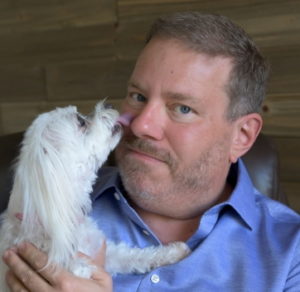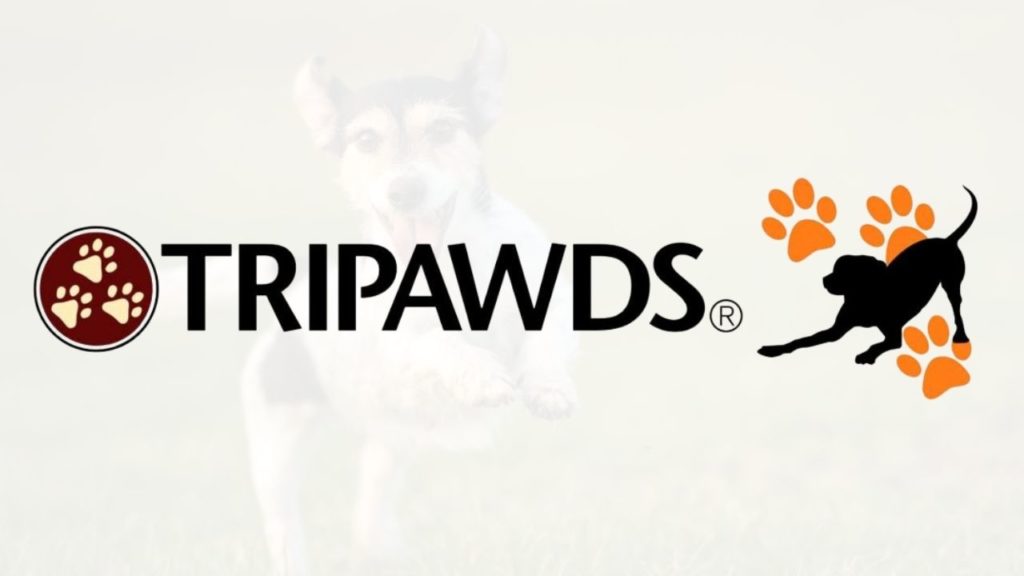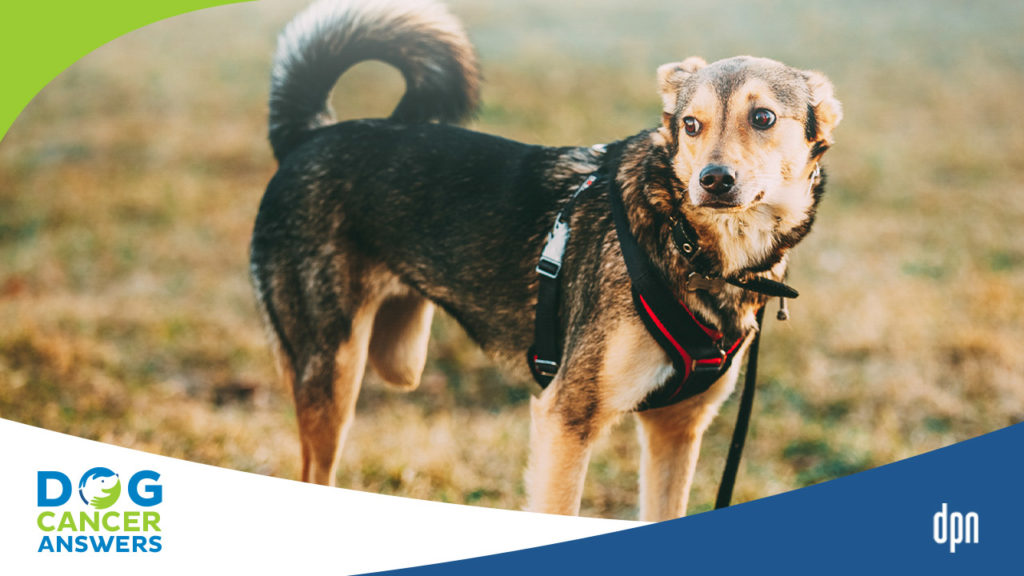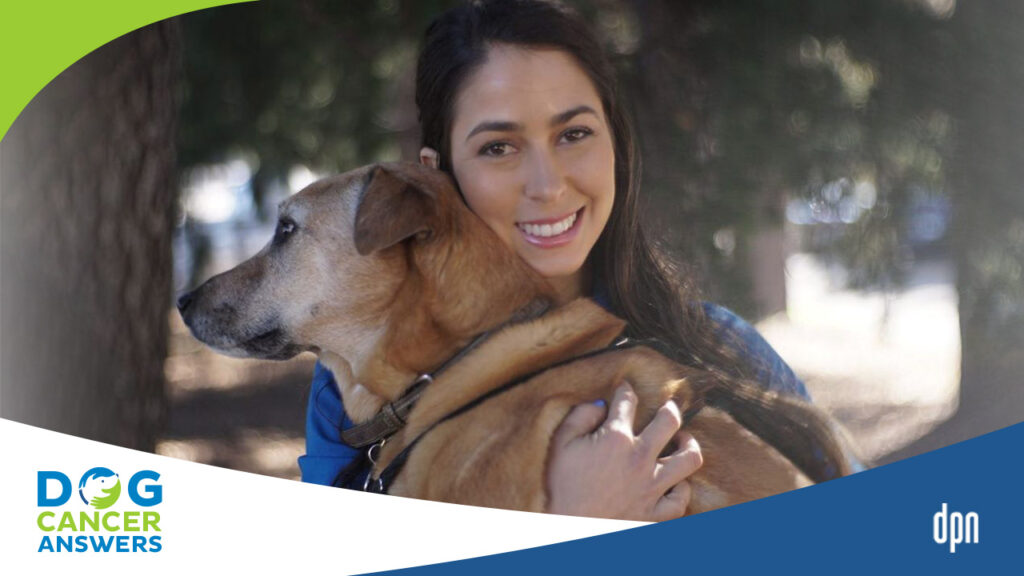>> Dr. Demian Dressler: They bounce back amazingly quickly and they’re doing their own physical therapy, by the way, while they have the cancer.
>> Announcer: Welcome to Dog Cancer Answers where we help you help your dog with cancer. Here’s your host, James Jacobson.
>> James Jacobson: Thanks for listening. Today we talk about a dramatic choice that too many dog lovers have to make: whether to amputate one of their dog’s legs.
It sounds brutal, doesn’t it? It’s a big surgery. But Dr. Demian Dressler thinks it is often necessary if your dog has bone cancer.
This is one of our Question and Answer episodes, where we take a Listener Line question and pose it to one of our Full Spectrum veterinarians. If you have a question that you’d like to ask, I’ll give you the phone number to do that later in the show.
And by the way, if you haven’t subscribed to our podcast yet, this is a good time to hit the subscribe button. And don’t forget to tell a friend and your veterinarian about this show, it’s how we grow and it is the best way that you can help support us so that we can support as many dog lovers as possible thru what can be a very difficult time.
Now, let’s hear from our listener, and her question for Dr. Dressler about amputation.
>> Sue: Hi, my name is Sue and I live in Connecticut. I have a male dog. He’s seven years old. And we’ve taken him to the doctor and we recently discovered that he has bone cancer and the doctor says that the very best thing to do, because it hasn’t spread, is to have his leg amputated.
And we’re just wondering if we should get a second opinion, or if it’s really necessary? He’s an active little terrier, and we don’t want him to lose his quality of life, so we just want to know what the best course of action is so he can continue to have a happy life with us.
So I really appreciate any information you can give us that will help us make that decision. Thank you very much.
>> James Jacobson: Doctor?
>> Dr. Demian Dressler: Good question. This comes up actually pretty frequently because osteosarcomas are pretty common cancer of the bone.
The short answer is yes. Consider the amputation. I in general usually advise it,
And one of the things that people don’t seem to realize, naturally, being people, being bipeds, that is—we have two legs and we walk around on two legs—is that an amputation for a dog that has four legs is quite different from an amputation with a person that has two legs, because if you take off one of the two legs, you’ve got 50% reduction, you’re hopping around and it’s difficult to stand.
If you do that on a four-legged animal, and you’ve removed 25%, you’ve still got three good ones, and they actually do pretty darn well. And it’s amazing. There’s actually a website, Tripawds, and that’s something that you can check out, and it’s a community forum and you can learn and see that actually these dogs do really, really well on three legs after only, gosh, I mean often a few days.
Particularly a little dog who’s running around: they bounce back amazingly quickly and they’re doing their own physical therapy, by the way, while they have the cancer.
Almost always the way that osteosarcoma presents is limping, and almost always people think the dog has sprained his leg. Then you take an X-ray and you find a bone tumor in there, particularly if it’s an old dog, and particularly if it’s a dog of a giant breed, whether it’s a greyhound or any of these giant breed dogs that are prone to it.
And you’ll realize that they’ve been doing their own physical therapy for some time because this is one of the cancers that starts as a painful cancer really often, and they’ll be bearing weight on the other three legs and they’ll be building up the other three legs and they’ll be doing their own PT, physical therapy.
And if you’ve got a smaller dog, those guys do remarkably well. And the older dog’s recovery’s a little bit slower, but usually 7 to 10 days, they’re getting around fine.
The thing to think about, two things with osteosarcoma.
One is, there is a very depressing statistic that by the time that cancer is detected, it has almost always spread to the chest, even though you can’t see it on the chest.
That’s called micrometastasis. You can’t see that on an X-ray.
All of these dogs should be getting systemic cancer care, not just removal of the tumor, because there’s going to be cancers in the chest, almost always, and those cancers are trying to grow and they’re trying to hurt these dogs and unless you start getting things going quickly, we can look at a dog who shows up five, six months later, four months later, and they’re coughing.
Why? A tumor just grew in the chest and it was planted by the one that was in the leg.
The final thing to think about is that we need to be aware of other simultaneous orthopedic issues, meaning: what if it’s a hind limb? Okay. How’s the other hind limb? Is it reasonable? How are the other joints? If we’ve got a situation where the dog is already really, really, really having a hard time getting around, we’ve got to look at this very carefully, because it could be that we create a bad circumstance and maybe the last three legs are not adequate to support that animal’s weight effectively.
A way to test this is you can put a sling on the affected area for a couple of days or a day, and get a sense for where things are at in terms of the other remaining legs, before you do the procedure. If the other legs are looking really bad and/or if you’ve got a giant breed dog who is also very, very fat, that’s usually when we get in trouble.
But anyway, I hope that answers your question. In terms of the other cancer-fighting supportive strategies, please read The Dog Cancer Survival Guide, because the full spectrum approach is not just cutting it out, because if there’s cancer cells remaining in the body, they have to be addressed. They have to be addressed with diet, with apoptogens, with immune support, with keeping the animal lean, with the mind-body connection, with the addition of other supplements, et cetera, et cetera. So, I hope that helps.
>> James Jacobson: I think it will help. It was a great question. Great answer. Thank you Dr. Dressler, and we will make sure there to link to Tripawds and their website in the show notes for this episode.
I want to thank Dr. Dressler for answering Sue’s question about amputation. I know I personally would feel pretty bad if I had to do that with my dog, but I’m reassured by the math. Losing one leg out of four isn’t as bad or hard to adjust to as losing one leg out of two, and that was a really helpful point.
I liked when Dr. Dressler talked about using a sling to support the bad leg for a day or two, so that you can see just how your dog seems to get around when they don’t have to bear weight on that leg. I bet a lot of people who have to make this choice will be reassured by trying that.
Now, Dr. Dressler mentioned Tripawds.org. It is an amazing community run by two big-hearted dog lovers. Jim Nelson and René Agredano have been helping people understand and cope with amputation in dogs for years, and their website is just an amazing resource.
In fact, they will be guests on an upcoming episode of Dog Cancer Answers, so watch your feed for that episode.
And in the meantime, we will link to their website in the show notes for today’s episode, so be sure to check those out.
–TOUCH TONE SFX–
Those touch tones are a reminder that you can call our Listener Line and leave a question about dog cancer for one of our veterinarians to answer on a future episode. If you want to record your question, please call 808-868-3200 or visit our website at DogCancerAnswers.com, where you can listen to or download our back catalog. It is the best way to help give you the information that you need to help optimize your dog’s life quality and longevity.
We’d like to thank our sponsor: The Dog Cancer Survival Guide book by Demian Dressler and Susan Ettinger. It’s available wherever fine books are sold both online and in physical bookstores. And if you’d like to help support this show, get the book right away from the publisher. You can get either the paperback (with free shipping anywhere in the USA) or the ebook edition, and the ebook is just $9.95. To get either the ebook or the paperback go to this website: DogCancerBook.com. And because you are a listener to this show, if you use the promo code “podcast” when you check out, you can save 10%. The website again: DogCancerBook.com. Use the promo code “podcast” for 10% off. That is www.DogCancerBook.com.
That’s about all we have time for today, but I want to thank Dr. Demian Dressler for being our guest. If you’d like to reach out to him directly, his website is www.VetinKihei.com. I will spell that: Kihei is spelled K-I-H-E-I, Vet in Kihei dot com.
Until next time, I’m James Jacobson. From all of us here at Dog Cancer Answers and Dog Podcast Network, I wish you and your dog a warm Aloha.
>> Announcer: Thank you for listening to Dog Cancer Answers. If you’d like to connect, please visit our website at DogCancerAnswers.com or call our Listener Line at 808-868-3200.
And here’s a friendly reminder that you probably already know: this podcast is provided for informational and educational purposes only. It’s not meant to take the place of the advice you receive from your dog’s veterinarian. Only veterinarians who examine your dog can give you veterinary advice or diagnose your dog’s medical condition. Your reliance on the information you hear on this podcast is solely at your own risk. If your dog has a specific health problem, contact your veterinarian.
Also, please keep in mind that veterinary information can change rapidly. Therefore, some information may be out of date.
Dog Cancer Answers is a presentation of Maui Media in association with Dog Podcast Network.








